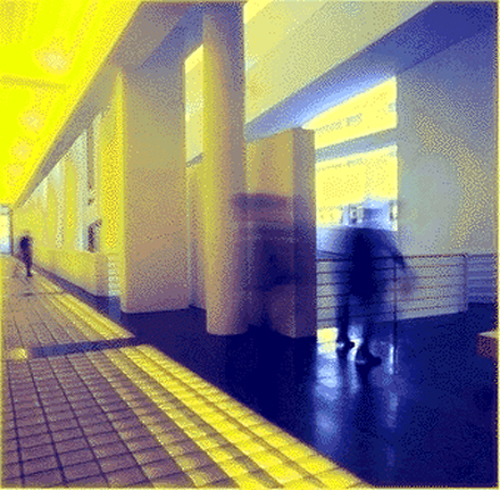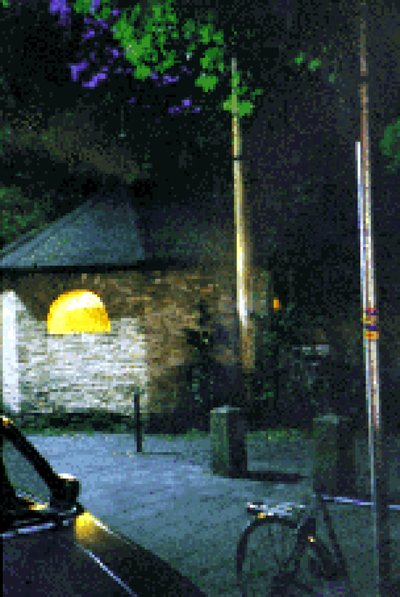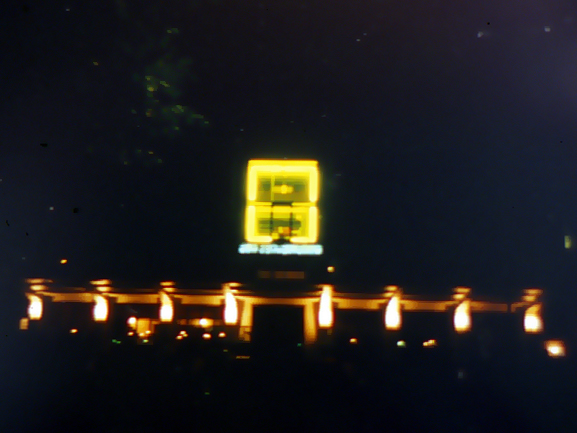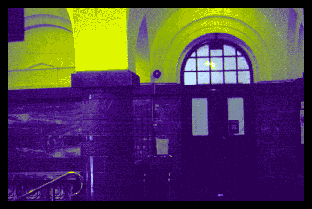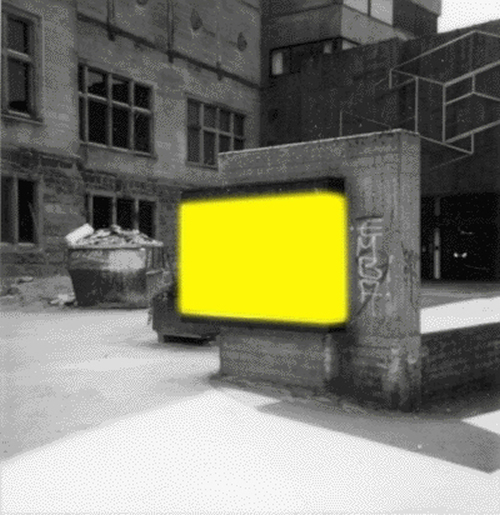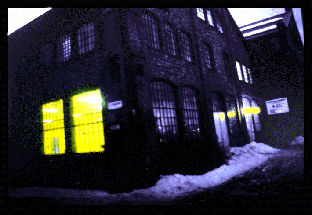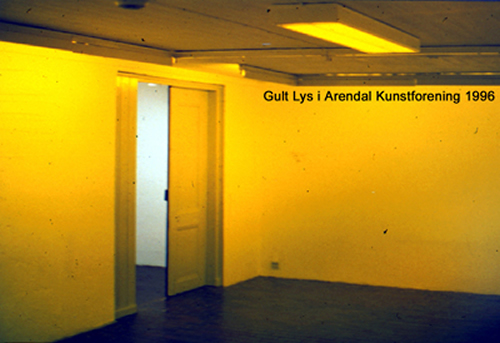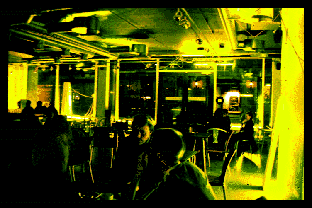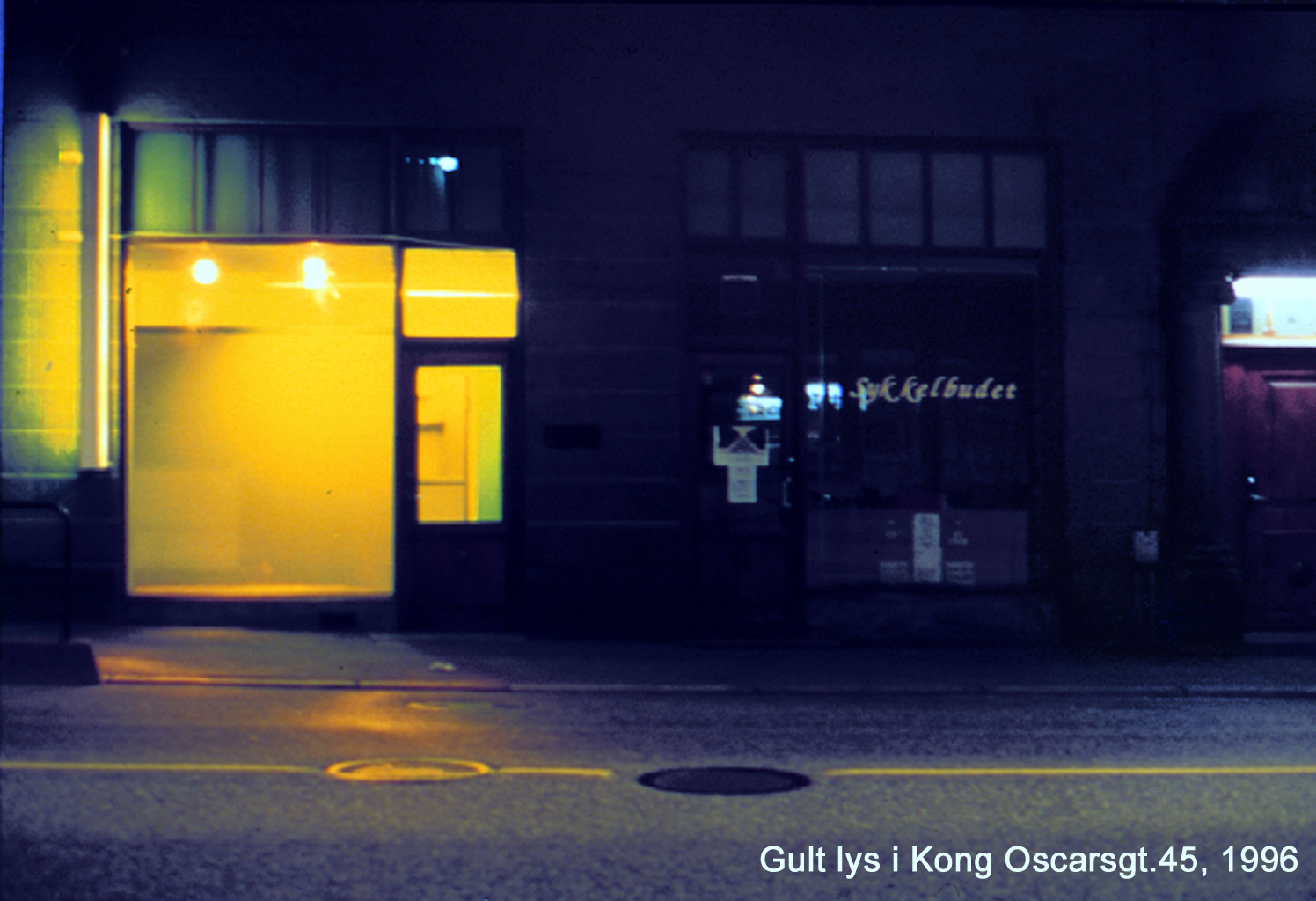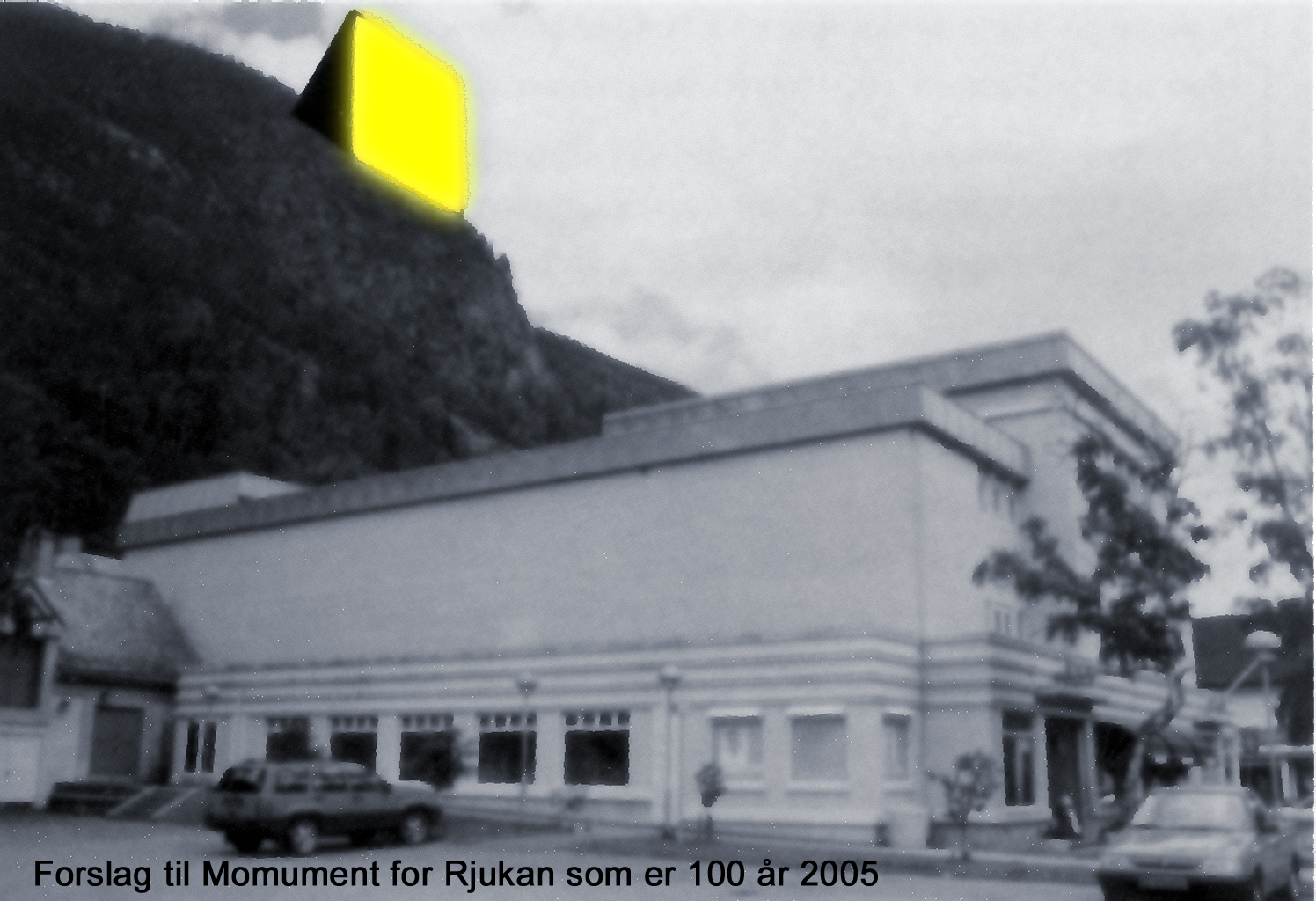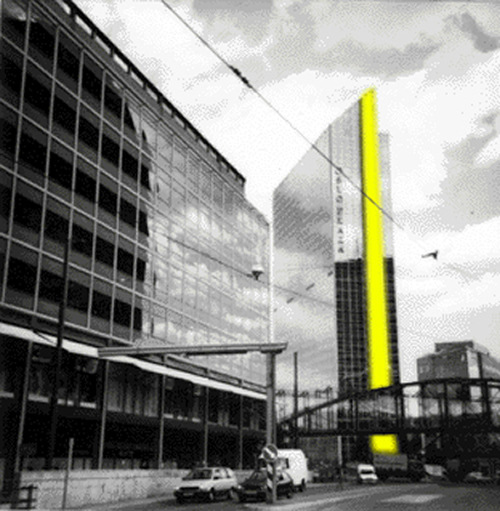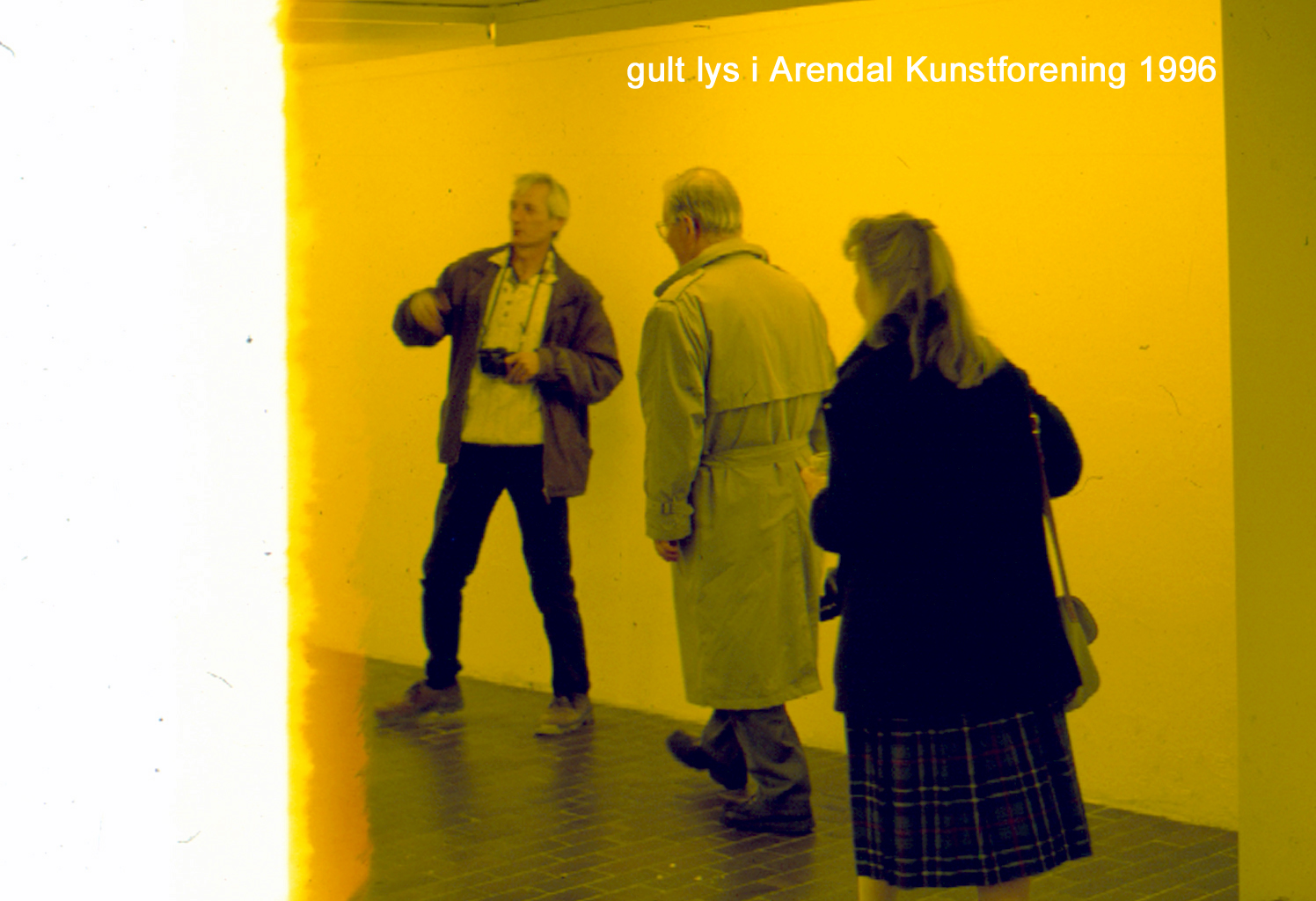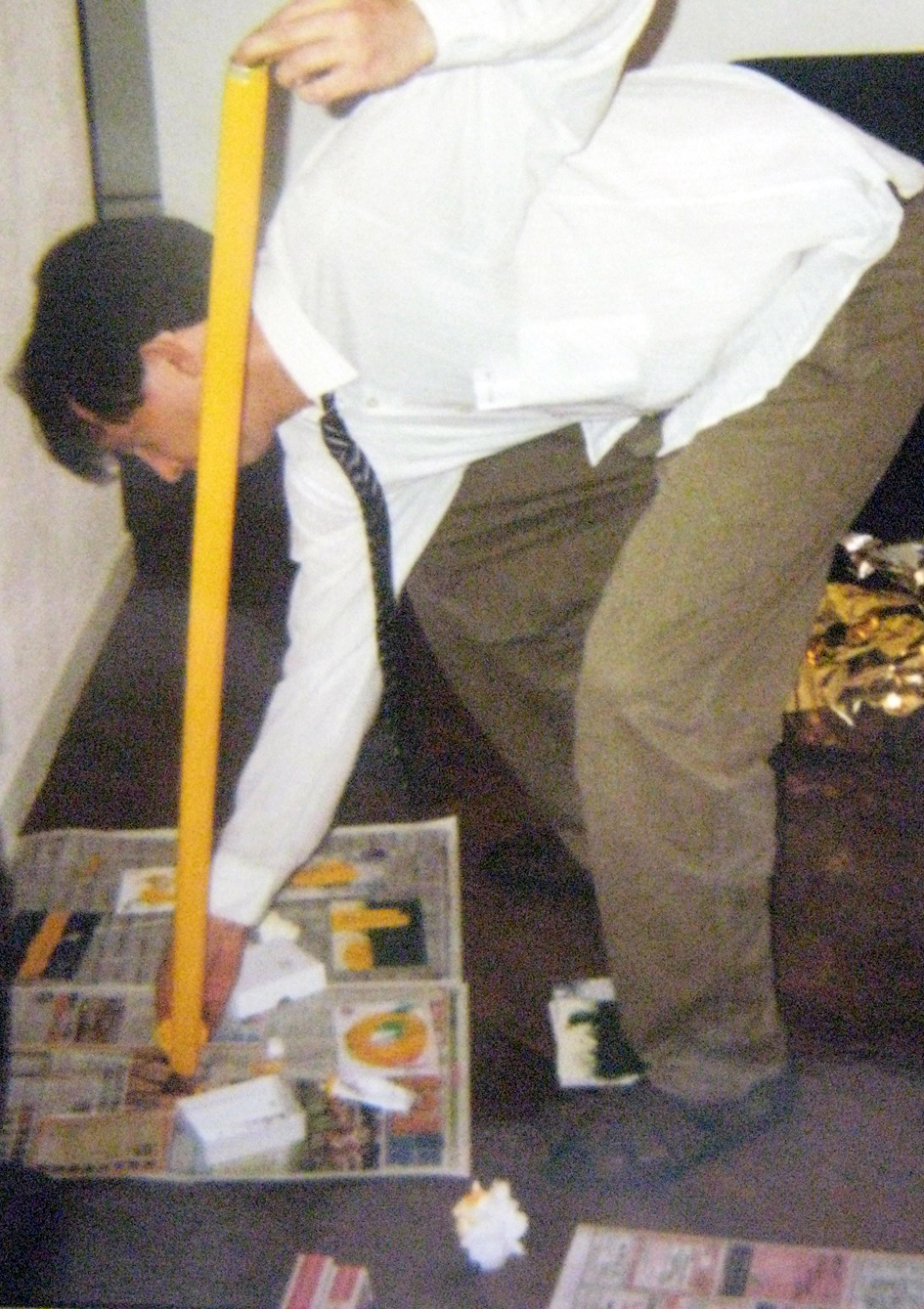During three years I installed yellow lights in 14 different museum and art institutions throughout Norway, in Helsinki and in Münster, Germany.
"Nicolaisens omgang med gult lys står i en stilling for seg. På en utstilling i Galleri Otto Plonk i Bergen i 1996 kom publikum til en stengt galleridør. Inne var lokalet derimot fullt opp med et kraftig, gult lys som strålte ut gjennom noen ruter. Kunstverkets objektkarakter og kunstsystemets varefetisjisme ble undergravet samtidig som selve kunstrommet ble løftet frem som kilde til energi og innsikt".
Øystein Ustvedt (2011), En ny oppmerksomhet om tegning i Nyere Norsk Kunst etter 1990
english below
"Nicolaisen's dealings with yellow light stand in a position for themselves. At an exhibition in Gallery Otto Plonk i
Bergen in 1996, the audience came to a closed gallery door. Inside, however, the room was filled with a strong yellow
light that radiated through some panes. The artwork's object character and the art system's commodity fetishism became
undermined at the same time as the art room itself was highlighted as a source of energy and insight".
Øystein Ustvedt (2011), Towards a new attention to drawing, in Recent Norwegian Contemporary Art after 1990
Da jeg gikk på Akademiet i Trondheim, utviklet jeg et grep for institusjonskritikk, som senere ble gjentatt og brukt i mange ulike offentlige rom. Ideen var meget enkel; Jeg tømmer lokalet /institusjonen for objekter og innhold og erstatter (fyller) rommet med gult lys. Rommet skal forståes som et objekt, en skulptur om man vil, som best betraktes fra utsiden, gjennom vinduer eller andre lysåpninger.
Påstanden er at utstillingsrommet i seg selv er det eneste gyldige verk. Kunstverkene som til vanlig stilles ut her, er kun et gissel for institusjonen, kunstverkene fungerer som commonplace, hvor selve målet for publikum og for institusjonen er å bekrefte sin egen kulturelle kapital.
Det gule lyset generes ved at jeg malte lystoffrør og / eller andre lyskilder med oljemaling (LUKAS Gelb Feine Künstleisches Ölfarbe). Alltid bruke eksisterende lyskilder, Slik kunne jeg - kunstneren - unngå å bli kompromitert av institusjonen og allikevel levere et arbeide som skapte stor interesse blant kunstetablissementet, både for verkets visuelle kraft og for dets teoretiske muligheter.
________________________________
UTOPIA AS A CRITICAL TOOL
The work that Nicolaisen presented at Münster was part of a larger project entitled Yellow Light, which had been shown at a number of venues. It was the first of a long series of works by Nicolaisen that comments on the art institution. The project involved emptying the gallery space of art objects and replacing them with an intense, yellow light. Nicolaisen’s use of gallery space had predecessors in conceptual art from the end of the 1960s to the middle of the ‘70s. During this period, artists such as Mel Bochner, Marcel Broodthaers, Peter Weibel, Hans Haacke and Michael Asher began criticising the institutional contexts art operated in. This marked the beginning of the practices that were later to be called institutional critique. Many of these early works aimed to show how the white cube, with its white walls, artificial lighting and shuttered windows, contributed to separate art from the real world. The idea was that the white cube upheld Modernism’s dogma about the autonomy of the work of art.
Yellow Light was produced three decades later, at a time when the Modernist discourse on art’s autonomy discourse was more or less irrelevant. But the point of departure for the series was nevertheless an “anti-white-cube attitude”. Nicolaisen later explained the motivation behind the project:
It seemed to me […] that whatever you put into a white cube would function as art. This led to the assumption that the white cube itself is the genuine art constitution and that the space
is the object and the art it’s hostage. TN
In Yellow Light, the gallery itself was turned into a readymade, as Weibel, Asher and others had done in the early days of institutional critique. But whereas Weibel and Asher emptied the space in order to show the gallery as an architectural framing device, Nicolaisen chose a different strategy to objectivise the space. The gallery itself was closed to the public during the exhibition and could only be seen from outside. In this way, the gallery was transformed from a venue for socialising and experiencing art to an inaccessible sphere that only emitted an enigmatic, yellow light.
For those unfamiliar with Nicolaisen’s projects, the work appeared merely as a yellow light shining from a room. One of the core ideas of Nicolaisen’s oeuvre has been precisely that of creating a non-artistic room around his own works. The works are often “unrecognisable as art” and appear to be, for example, urban spaces or sites. Nicolaisen’s intent was to capture the attention of the viewer
- without him having to navigate through an understanding of art […] Freed from this particularly problematic and mystical understanding, the beholder has related to the art work on a 1:1 basis, through an open and average degree of interest. In this context, art has been revived, albeit without identity. TN
Ingvild Krogvik (2011)
Published in the book Supplementary Notes 1994 - 2011 on Selected Proposals 1995 - 2005 (2001) Henie Onstad Art Center, Høvik
_______________________________
Tina Hanssen on Yellow LIght:
It is still Conceptual art from the late ‘60s and early ‘70s that most clearly sets the premise for Nicolaisen’s artistic practice. First of all, the movement’s insistence on ideas rather than visuals as the foundation for the works’ content, but also its anti-monumental approach to sculpture – an approach that showed a penchant for transitory materials such as soil, water, felt and asphalt rather than traditional materials such as marble, stone and bronze.
One of the inspirations for Nicolaisen’s work with proposals is the American conceptual artist Michael Asher’s institutionally-critical works. Asher presented a number of suggestions for physical changes at museums and galleries, and several of these were realised. In 1970, he proposed, among other things, that the Pomona College Museum of Art should remove all its entrance doors, a physical intervention that resulted in the gallery being open day and night over the course of the exhibition period. In 1974, he suggested to Claire S. Copley Gallery in Los Angeles to remove the wall that separated the exhibition room from the employees’ office. This physical intervention made the office part of the exhibition space so that visitors gained full insight into the business’ daily routines and tasks.
Nicolaisen’s Gult lys (1994-1998, Yellow Light) can be seen as a continuation of Asher’s works. Gult lys was shown, amongst other places, in Münster in 1997 at the same time as the execution of Skulptur. Projekte in Münster 1997. Nicolaisen was not invited to participate in the exhibition programme, but chose to conduct his own intervention in the exhibition and in the city by presenting a self-produced exhibition with a catalogue, poster, postcards and press release. The work itself was to empty the gallery space of artworks and fill it with an intense, yellow light. Nicolaisen also went to the drastic step of shutting the audience out of the gallery space; the audience could only view the yellow light through the windows, standing on the sidewalk outside the gallery room.
Strategy, absurdity and restless comments excerpts, Tina Hanssen, No More Jokes, Kerber Verlag 2019
____________________________
About the yellow light in general, there was much fuzz, Daniel Ferdman, who was a fellow student, wrote this poetic review in KITSCH 1995:
300 000 km/s Mellow Yellow
Caused by Terje Nicolaisen's installation in the Projecthall at KIT, Trondheim, February 1995
Light is that which makes things visible, and give light to something is to illuminate - to illuminate is to make clear, a help to explain, to make bright - yellow is the colour representing brightness, it expresses energy
- and while it is getting dark outside, I come near to the Projecthall and it becomes clear to me - yellow fluorecent lights have been installed istead of white ones - Terje is creating a field of energy, a powerstation radiating mellow yellow waves of pure illumination to the soul - a metaphor for illumination, in the sense of knowledge of spiritual enlightment?
- but shit, no way into the space, the room is locked - I think Terje gets right to the point here - both thinking about the critical view towards traditional exhibition forms and showing the difficulty of being "illuminated" by art works - the superfluidity of signs without content nowadays makes artworks difficult to grasp: they sink into an ocean of weightless concepts - to develop a codex for communication in our time is an exhausting task
- the room seen as an object illustrates the relationship between seduction and desire: the room seduces us, and blocking the way to the entrance strenghtens the feeling of desire to occupy the space, be a part of a wellknown structure of language on a safe ground
- a sign over the front door produces the same kind of yellow light but is displaying nothing, being as empty as the room - there is no message but the light, connecting with the inside
- that reminds me of illuminating as decoration of public spaces with bright lights as a sign of rejoicing, natural events arranged to give people some kind of unity, some link between them and the social apparatus; and when it is over, everything becomes as dull as before
- public spaces displaying bliss, products loaded with promises about a harmonic existence, but being totally hollow in content, in meaning - brightness is supposed to make people cheerful and happy, to give them hope, light them up with joy - in Terje's installation that does't happen - the doors to happiness are closed, you've been promised something you can't get
- the work is loaded, not with pessimism (as it may sound here), but with a sharp critical comment to the state of things in our society - Terje is not directly political here: he is politically concious leting his work bring up the subject - darkness couldn't have brought up the point so clearly
- I hope we all got enlightened by Terje's work, and as Jean Baudrillard wrote: "...things visible do not come to an end in obscurity and silence - instead they fade into the more visible than visible: obscenity"
- have you seen the light?
